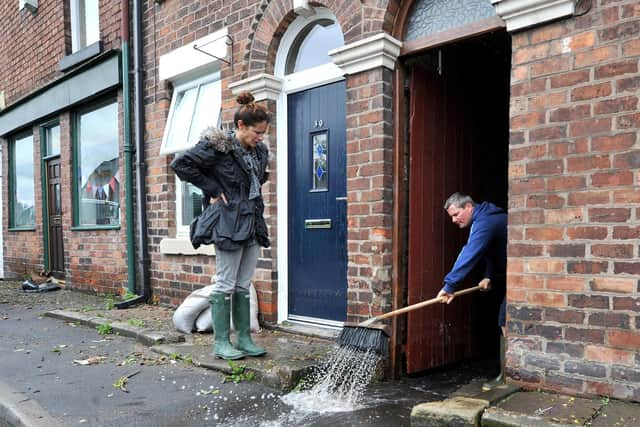Storm Christoph: What households can expect when making an insurance claim
and live on Freeview channel 276
The Association of British Insurers (ABI) is offering some general tips to households affected by Storm Christoph.
When preparing for a flood, consider getting a bag of emergency supplies such as bottled water, cash, keys, a torch and essential medicines together; moving valuables and important documents to somewhere safe; and moving vehicles to higher ground.
1. Contact your insurer as soon as possible.


Advertisement
Hide AdAdvertisement
Hide AdThey will advise you on arranging alternative temporary accommodation if necessary, or any temporary alternative trading premises if you have business interruption cover. Insurers will also tell you about the information they will need you to support your claim, and how to go ahead with the clean-up and repair process.
2. Expect to hear from a loss adjuster.
A loss adjuster will be appointed by your insurer to assess the claim. An initial assessment of the damage will be done, the reinstatement process explained and the options for alternative accommodation outlined.
Expect to hear from a loss adjuster two days after contacting your insurer. If your loss adjuster needs to visit, they will aim to do so within seven days of the water receding.
You may be approached by independent loss assessors who want to manage the claim on your behalf, often at your expense. You should not need to employ your own loss assessor, but if you are considering it ensure you are fully aware of the detail of what you are signing up for, including fees.
Advertisement
Hide AdAdvertisement
Hide Ad3. Your loss adjuster will organise the cleaning and stripping out of your home.
This work should start within four weeks of discussing it with your loss adjuster.
4. Your home will be disinfected and dried out.
Your insurer or loss adjuster will appoint a drying company to disinfect and dry out your home. This can take from a few weeks to several months. Your loss adjuster will give you a timetable and keep you informed.
5. Your home will be repaired and reconstructed.
Repair work should start shortly after you get a drying certificate from the drying company. Your loss adjuster will appoint a builder to do the repair and reconstruction work and will keep you updated on expected timeframes.
6. You should eventually be able to move back in.
Advertisement
Hide AdAdvertisement
Hide AdYour insurer or loss adjuster will discuss with you when you can return home. Depending on how badly damaged your home is, this can be between a few weeks and a year or more after the flooding.
It is thanks to our loyal readers that we can continue to provide the trusted news, analysis and insight that matters to you. For unlimited access to our unrivalled local reporting, you can take out a subscription here and help support the work of our dedicated team of reporters.
Comment Guidelines
National World encourages reader discussion on our stories. User feedback, insights and back-and-forth exchanges add a rich layer of context to reporting. Please review our Community Guidelines before commenting.